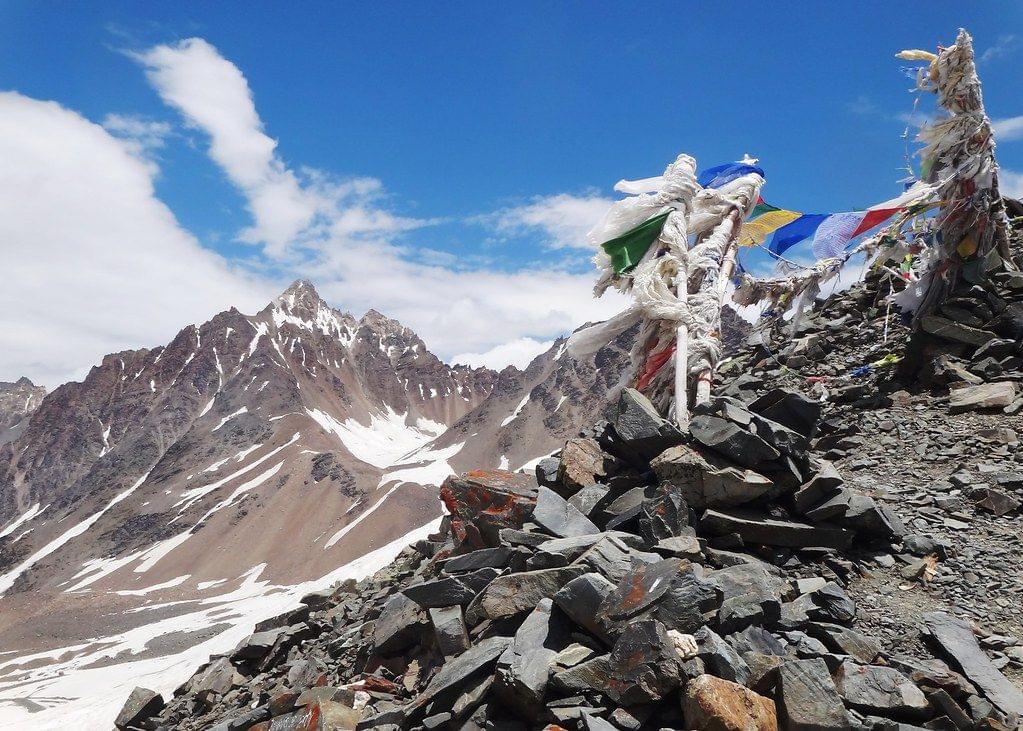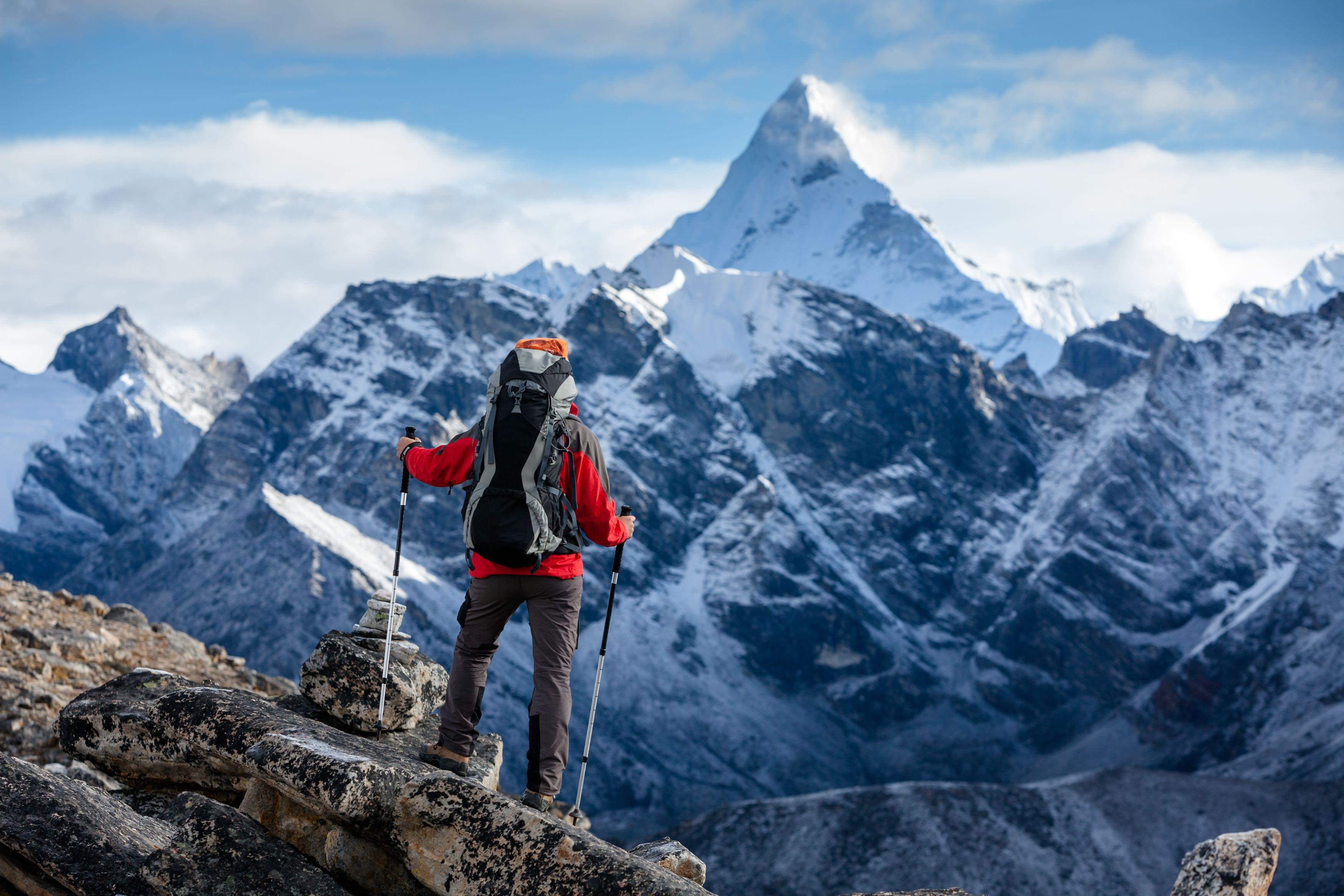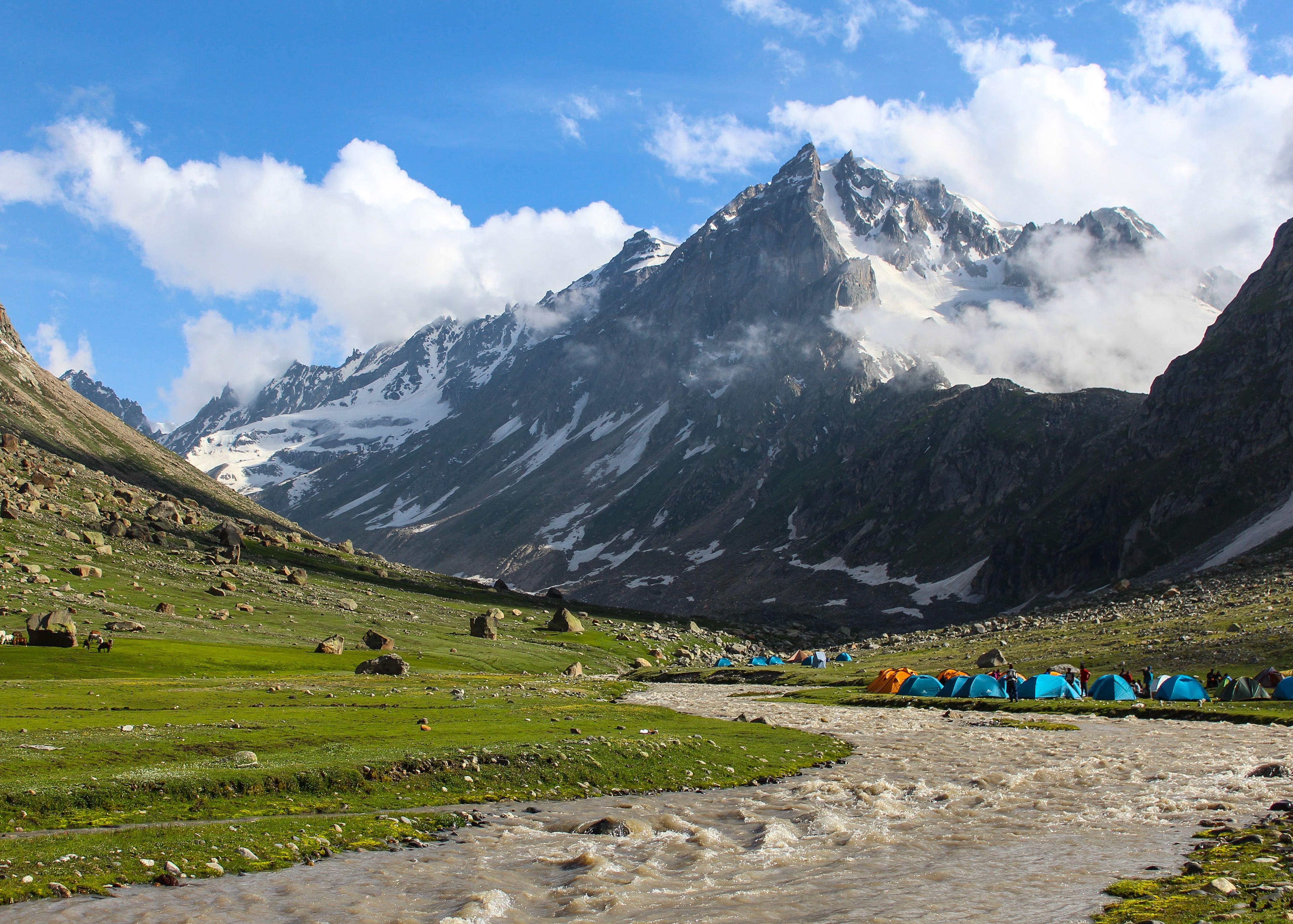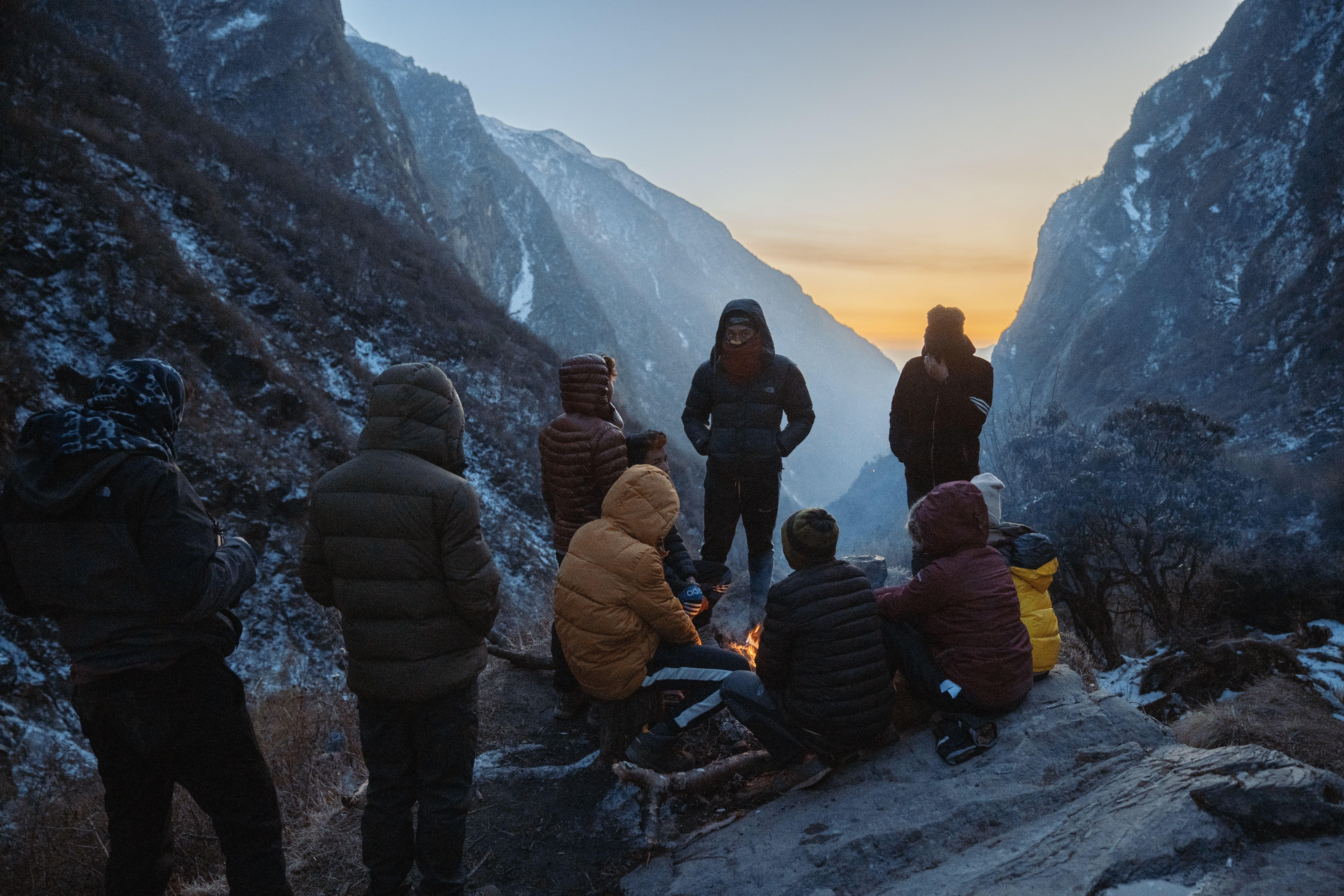Bara Bhangal Trek Overview
Quick Facts of Bara Bhangal Trek
Bara Bhangal Trek Altitude - It is a shepherd's trail of 30 km which is a moderate-to-advanced trek that reaches an elevation of 16,070 feet.
Trek Duration - The Bara Bhangal Trek is an 11-day journey.
Nearest Airport - The nearest airport is Bhuntar Airport in Kullu, and the closest railway station is Joginder Nagar, which is 166 kilometers from Manali.
Bara Bhangal Base Camp - The trek is located in the Kangra region, with the base camp at Kalihani.
Trek Start Point - The trek will begin in Lama Dugh.
Bara Bhangal Trek Temperature - The place has moderately cold temperatures, and monsoon rain and snowfall might restrict winter access to the mountains.
Best Time for Bara Bhangal Trek - The months of mid-June through mid-October are ideal for this trek.
Trek Grade - The Bara Bhangal Trek is a difficult one, and only real adventure enthusiasts should go for it.
Short Itinerary for Bara Bhangal Trek
Bara Bhangal Trek Detailed Itinerary
Manali to Lama Dukh
The Trek will begin from Manali. You'll travel to Lama Dugh (3017m) in a timeframe of four hours.
There is no other water source after leaving Manali on the Bara Bhangal Trek till you reach another campsite.
When you reach the top of each steep incline, you will be rewarded with spectacular landscapes of the varying aspects of Indrasan, Deo Tibba, and the peaks of the Bara Shigri glacier.
The final segment of the trail takes a right turn, taking you on a horizontal traverse through the ridge to a flat area covered in alpine flowers that serves as the campsite.
Lama Dugh - Riyali Thach
The second day will witness a roughly one-kilometer increase in height for the travelers. The target will be to reach Riyali Thach (3400m) from Lama Dugh in three hours.
Below Thanpri Tibba, the route travels along a ridge that is quite steep at 4000 meters.
From this vantage point, you will have magnificent views of Manali, which is located on the left bank of the River Beas. The entire upper Kullu valley looks extremely beautiful and that can be seen.
Riyali Thach - Base of Kalihani Pass
The third day of the trek will consist of traveling from Riyali Thach to the base of Kalihani Pass, which will take approximately six hours. It is one of the longest days on the Bara Bhangal Trek.
You will begin by traveling across open meadows, and the next part of the journey will consist of a precipitous slope to a brook.
When you reach the other side, you'll see that the trail continues on a hard ascent for another three hours before it levels off at the camp at the foot of Kalihani Pass.
The mountains of Deo Tibba and Indrasan can be viewed from the campsite, and you can capture photographs of the beautiful view as well.
Base of Kalihani - Devi ki Marhi
The fourth day of the trek takes you from the Kalihani Base to the Devi ki Marhi (3850m) over the Kalihani Pass (4725m) and takes a total of 8 hours.
Today's trek to the pass will be tough and demanding due to the requirement of crossing a piece of screen, a moraine, and the Kalihani glacier. The day is going to be lengthy.
Indulge in a comfortable stay at the pass for a breathtaking panorama of the surrounding mountains, including the Pir Panjal and Dhauladhar ranges, with their associated hanging glaciers.
Devi ki Marhi's gaddi campground is reached after a precipitous fall through another glacier and four stunning glacial lakes.
Devi Ki Marhi - Dal Marhi
On the fifth day, begin the walk from Devi Ki Marhi to Dal Marhi at an altitude of 3900 meters, which will take us six hours.
Initially, you will descend into the oak and birch forests after crossing over the Kalihani Nullah. After that, you will continue on your journey.
The majority of the trail is straight, with only a few gentle inclines and declines.
As the day comes to a close, you will have to traverse a strenuous ascent in order to get to the campground in Dal Marhi.
Dal Marhi - Bara Bhangal
The sixth day will begin with a six-hour hike from Dal Marhi to Bara Bhangal, which is located at an elevation of 2882 meters.
Continue on your journey to Bara Bhangal, the only significant settlement in the valley, by hiking past the picturesque Ravi river as it flows into the deodar forest.
The camp or tents will be set up in Bara Bhangal, which will be the gathering place for the evening.
Trek to Bara Bhangal
This day will be designated as a rest day in order to properly acclimate to the conditions that exist at this high level and to get rid of any and all fatigue that may have built up.
Due to its remote location, Bara Bhangal receives little tourist footfall. So, discover the village and the places surrounding it as much as you can.
It is inhabited by people belonging to the Gaddi tribe. You are free to wander about and experience the culture and environment of the neighborhood.
Bara Bhangal - Mardh
On the eighth day, we will pick up our trek from Bara Bhangal and continue for another 5 hours in the direction of Mardh, which is located at an elevation of 3830 meters.
The first section of the hike is an ascent in the direction of the next big pass that is Thamsar Pass. The path ascends through pine, deodar, and birch forests, with occasional mountain streams to break up the monotony of the landscape.
The Thamsar glacier may be seen from the campsite at Mardh, which is conveniently located close to its base.
Mardh - Plachak
Day nine will begin with the hike from Mardh to Plachak (2721m) through the Thamsar Pass (4878m) in an approximate time of seven hours.
The day will be filled with the adventure of strenuous climbs over moraines, scree, and glaciers.
Once you reach the Thamsar pass, trekkers can rest below the small lake along the ascent.
From the summit of Thamsar, spectacular views of the Kangra valley may be witnessed. On the other side of the pass is a steep and extended descent that brings you to the campsite at Plachak, which is located well below the tree line.
Plachak - Rajgundha
On the tenth day, you will head towards Rajgundha from Plachak in three hours.
Now that you have made it this far, you will be rewarded with the simplest day of the hike, which will take you through pine forests and many mountain streams on pathways that are straight and easy to navigate.
As the valley expands, the scenery opens out to reveal breathtaking vistas of the expansive Kangra valley.
After passing through the tiny community of Rajgundha, you will come to the camping area.
Rajgundha - Billing
On the final day of our hike, you will spend four hours traveling from Rajgundha to Billing, which is located at a height of 2310 meters.
Another day of leisurely strolling through untouched pine forests along a path that is both easy and wide until you reach the forest guest house in Billing, which marks the conclusion of the hike.
You will be transported to either Bir or Dharamshala after being picked up at Billing by car.
What to Pack for Bara Bhangal Trek?
You should be carrying a backpack that has a capacity of between 50 and 60 liters.
It is recommended to carry a sufficient quantity of warm and comfortable clothes, such as fleece jackets and thermals, as the temperatures may drop during your trip.
It is recommended that you bring a pair of specialized hiking shoes with you.. It is advisable that you wear comfortable hiking shoes on the trail, along with a pair of comfortable slippers, and an extra set of socks. It will help you keep your feet well rested and will assist you in conserving your energy, both of which are extremely important for engaging in activities of this nature that are so strenuous.
It is highly recommended that you bring sunscreen lotion or any other skin moisturizer with you in order to protect your skin from the potentially harsh sun rays that can be found at the peak.
Water Bottles, Since water is so valuable, conservation initiatives are lauded.
Because there are no stores or shopping malls at this level, it is recommended that you carry energy bars or dry snacks from home.
Carry a flashlight equipped with extra batteries for the night.
When going on a trek, it is always smart to bring along some insect repellant, some important medications, and a first-aid kit with you just in case something goes wrong.
Know Before You Go to Bara Bhangal Trek
If you are a beginner, the Bara Bhangal trek will be more difficult than others you may have attempted. As you prepare to embark on one of the challenging treks in Himachal Pradesh, here are a few things you should know. Following these tips will help you prepare yourself for every situation.
Mountains at a high altitude have extremely unpredictable climatic conditions than the plains; adapt slowly.
Get a medical checkup done before the trek. Bring a first-aid kit and any necessary medications with you.
Listen to leaders and instructors for a safe trek.
The journey passes through an eco-friendly zone; don't litter local sites or campsites.
Do not go for nighttime hikes unless they are planned and a guide is present; doing so can increase the risk of injury or death.
Using earphones on the hike may impair your hearing.
Camping is an experience with nature at its most basic. Nobody should expect luxury to be delivered.
It's possible that just a selected few places have access to power. So Have a flashlight, a portable battery charger, and a portable power bank handy.
Pack dry snacks from home. Make sure you have water bottles with you that you can refil as needed.
You should only bring the daily essentials, as more baggage will only be a burden.
Bring plenty of warm clothing and the proper hiking shoes for the Bara Bhangal trek.
The Bara Bhangal trail is not appropriate for children under the age of 7.
As there are no direct flights to either Manali or Kullu, the only way to get to the Bara Bhangal trek is either through Bhuntar Airport which is 11km from Kullu and 52 km from Manali. You can take a taxi from Bhuntar to Manali or you will be required to board an air-conditioned Volvo bus from Delhi in the evening to go to Manali.
You have the option of spending a day in Manali and exploring the local markets and tourist attractions. After that, continue on to your destination towards Lama Dugh at an altitude of 3,380 meters. After reaching Lama Dugh, you might choose to stay for a while and recover before continuing on to Riyali Thach, which is a journey of three hours leading to another stop called Devi ki Marhi via the Base of Kalihani through the Kalihani Pass.
You have the option of setting up camps for the night at the Kalihani Base, after which you can get an early start in the morning and head towards Bara Bhangal through Dal Marhi. And you will reach your final destination, the Bara Bhangal trek.
Owing to the fact that the village is extremely isolated, it is considered to be one of the most distant settlements in Himachal Pradesh. It is only accessible from the middle of June until the middle of October when the Thamsar Pass is open, therefore it is effectively sealed off from the rest of the world for almost half of the year.
In Summer - During the summer months, the temperature ranges from approximately 04 degrees Celcius to 15 degrees Celsius, while during the winter months, the temperature ranges from approximately -15 degrees Celsius to 5 degrees Celsius. Therefore, the best time to go on this hike is either in the month of June, which is before the monsoon season, or in the months of mid-September and October, which is after the monsoon season.
In Winters - This trek is not available during the winter months since the area receives significant amounts of snowfall and the trail becomes impassable due to the accumulation of snow.
In Monsoon - Because this region is prone to receiving a significant amount of precipitation during the monsoon season, it is strongly advised to forego the opportunity to go trekking here during that time.
Starting from the Kullu Valley, one of the more difficult routes is the Bara Bhangal trek, which travels across the Dhauladhar range to connect the Kullu and Kangra valleys. If you take any route, you will be at least two days' walk away from civilization and cut off from the rest of the world for the better part of the year. The long and isolated route involves crossing two high-altitude passes, Kalihani Pass at 4725 m and Thamsar Pass at 4875 m, and descending to the remote Bara Bhangal village.
Why to Go for Bara Bhangal Trek?
You May Also Book
FAQs of Bara Bhangal Trek
How Difficult is Bara Bhangal Trek?
The Bara Bhangal trek is known for being one of the most challenging and exciting treks in Himachal Pradesh. It is a high-altitude trek at an elevation of 4875 meters above sea level. It is a mountainous region that is located between the Kullu Valley and Dharamshala, and it is considered to be one of the most beautiful but least-known parts of the Western Himalayas.
The more physically capable and fit you are, the more value you'll extract from the experience of this trek. Put forth as much effort as you can to improve your cardiovascular fitness as well as your strength, particularly your abdominal and back muscles. This makes it easy to hike with your guide.
Furthermore, exercises will help in acclimatization for the upcoming vacation. It will be helpful if you have previous experience of walking long distances while carrying heavy weights (at least 15 kilograms).
What's the height of the Bara Bhangal Trek?
One of the most difficult treks is the Bara Bhangal trek, with elevations ranging from roughly 2050 meters to nearly 5000 meters. It's one of the best hikes out there, and you get to experience the thrill of navigating through steep, narrow passages and exploring dense glaciers and moraines.
How long is Bara Bhangal Trek?
The journey to Bara Bhangal is arduous, taking around 11 days to complete. It's a distant Himachal Pradesh village. No road leads to Bara Bhangal, thus one has to walk over the mountains to get there. Reaching the nearest road and trekking to this wonderful spot will take 3-4 days.
Can beginners do the Bara Bhangal trek?
The Bara Bhangal hike will not be easy for you, especially if you're a beginner. It's a professional-level challenge. You should have gone on a couple of short hikes before this one. Cardiovascular and weight training, as well as core strength, should be prioritized. This makes hiking with your guide a joy.
What is the weather condition on Bara Bhangal Trek?
Each Himalayan hike has its own unique set of meteorological circumstances. The weather is difficult to forecast because of the great altitude at which you will be trekking. At Bara Bhangal, the temperature is usually in the low twenties. Access to the summits may be blocked by heavy rain and snowfall during the monsoon.
What type of accommodations are available for the Bara Bhangal Trek?
You will have to spend some time in the camps as part of the Bara Bhangal Trek, which will add to the authenticity of the journey. Whether you're traveling solo or with a group of pals, twin sharing and triple sharing tents are available for accommodation.
How fit should Bara Bhangal trekkers be?
As a general rule, your enjoyment of the event is proportional to your level of fitness. Cardio and weight training should be prioritized, including core strength training. This will make hiking with your guide easier. Exercise helps in travel acclimation. Long-distance walking with heavy weights (at least 15 kg) is helpful.
How do I get trained for Bara Bhangal Trek?
Bara Bhangal trek is challenging. So, regular fitness training is needed for this expedition. Jogging and other cardiovascular activities are a good place to start. Squats, indoor exercises, swimming, skipping, and stretching will make your body flexible, strong, and energetic.
.png?w=auto&h=400)





